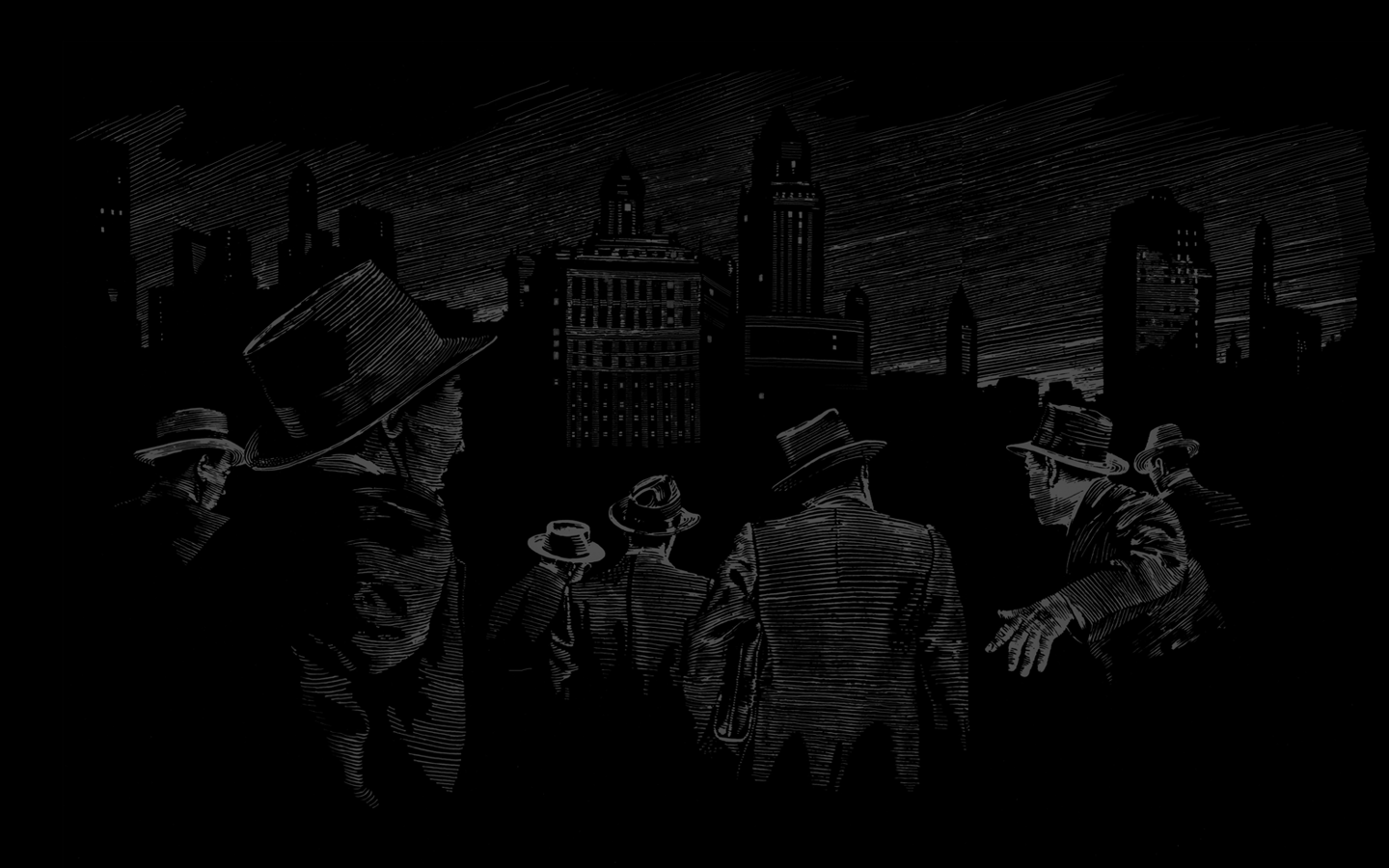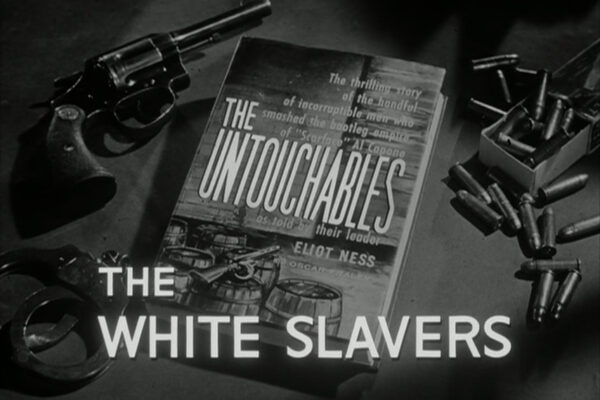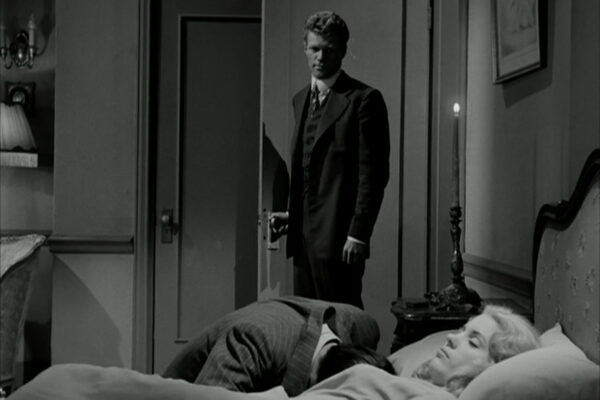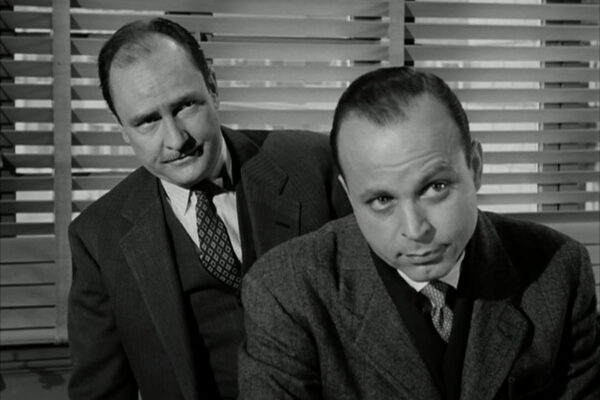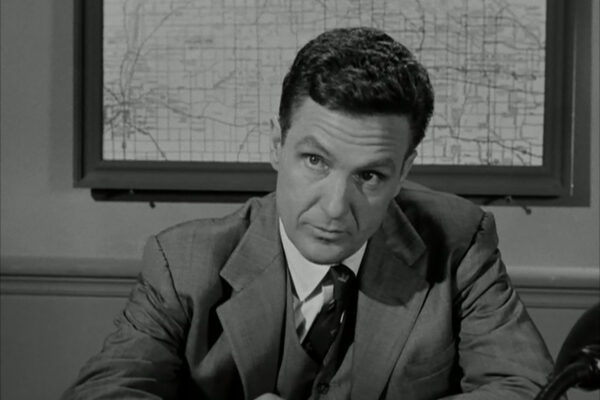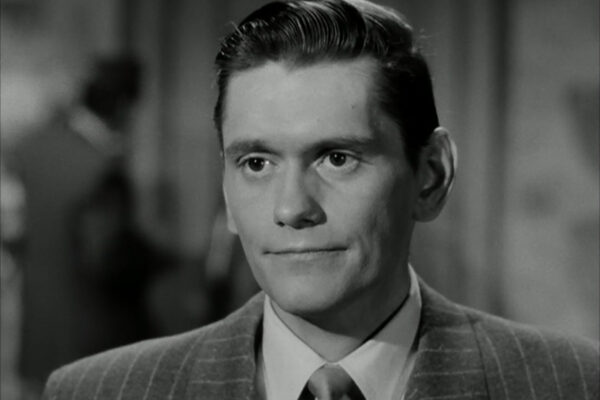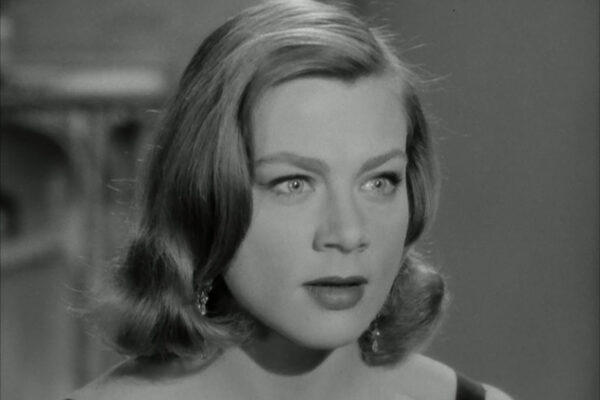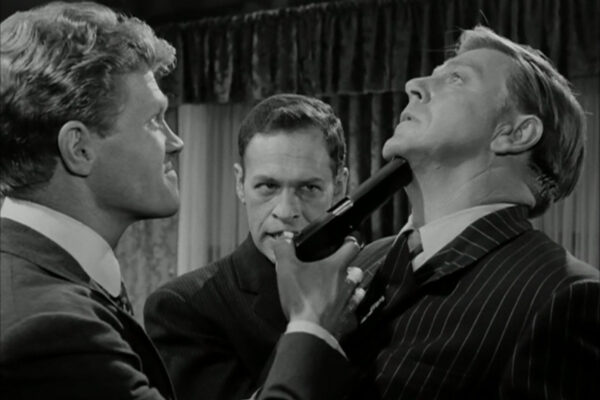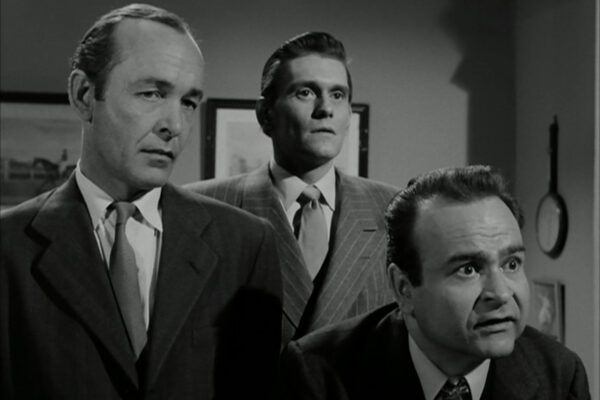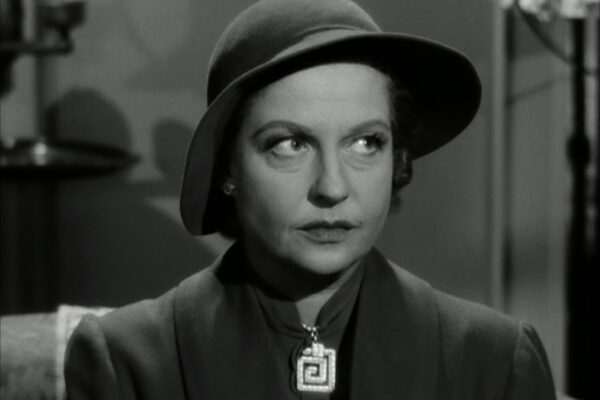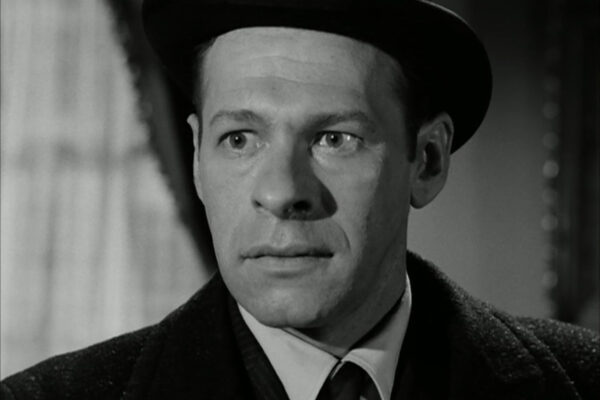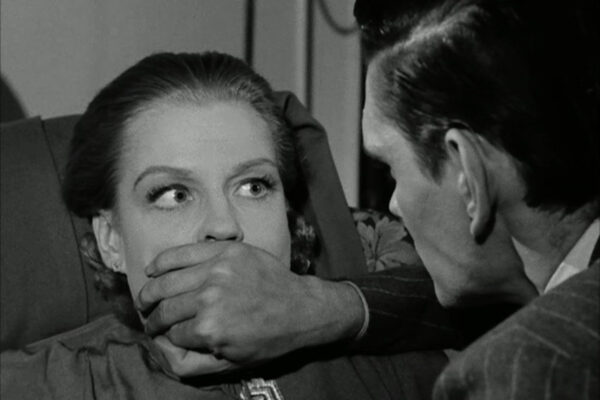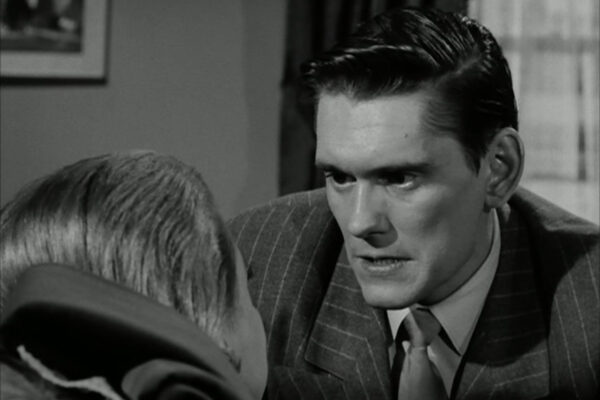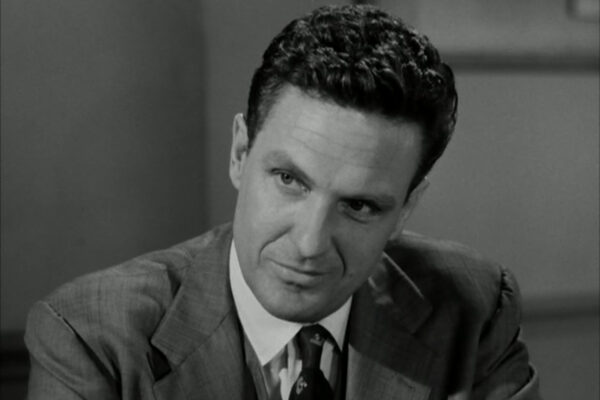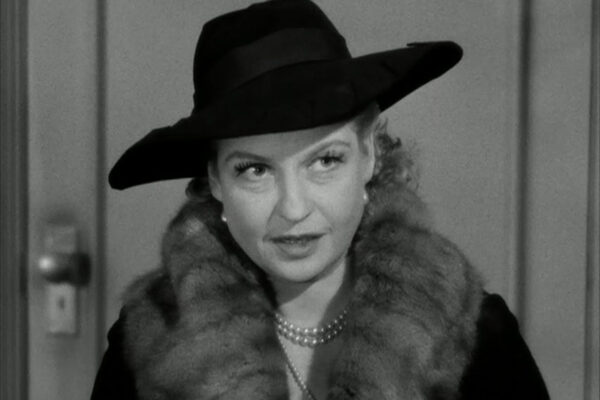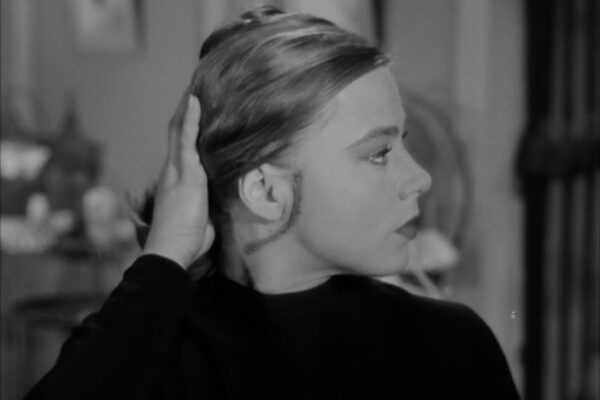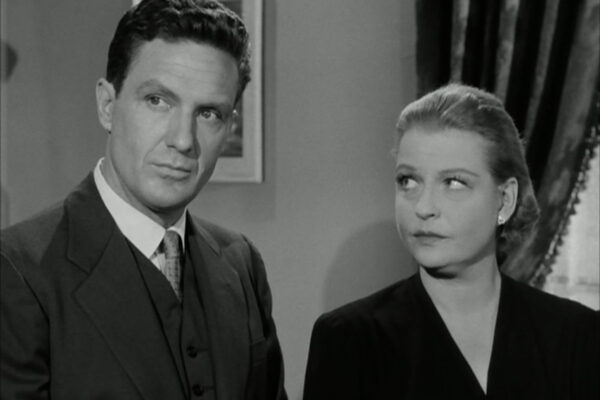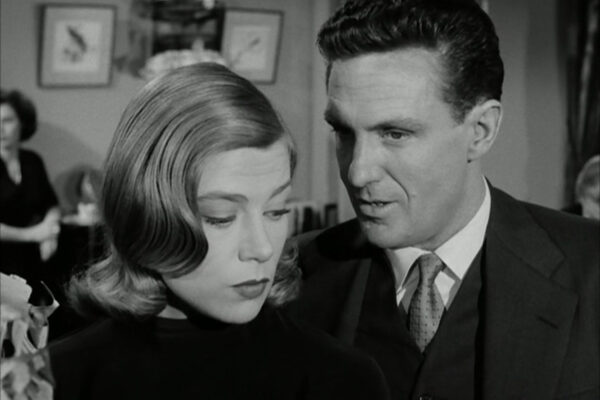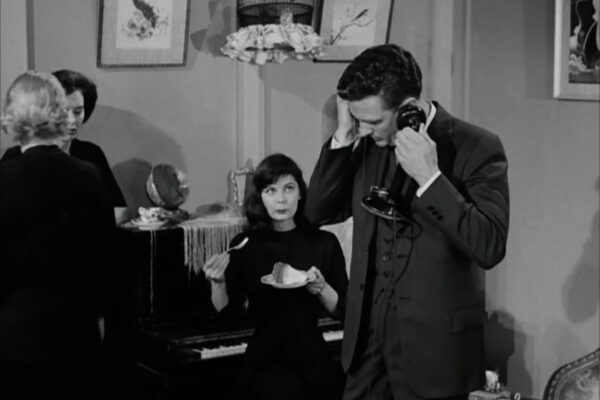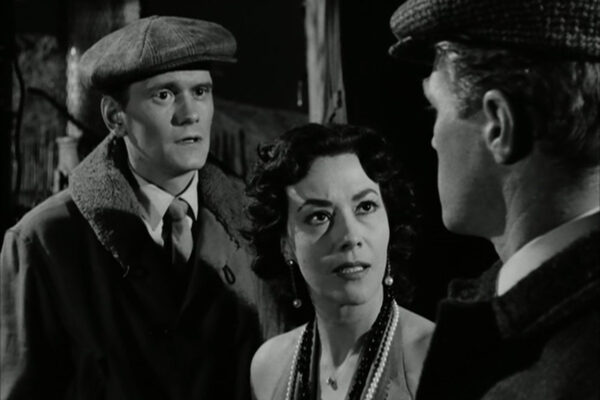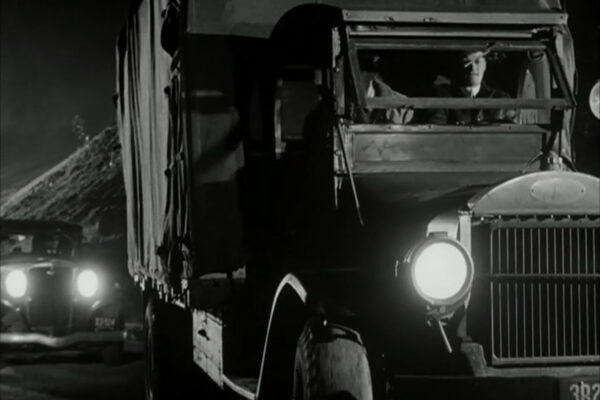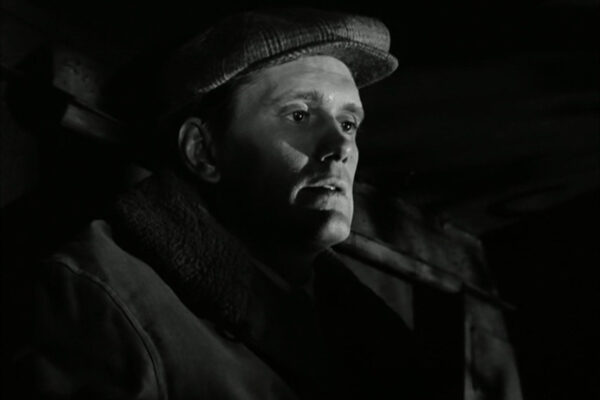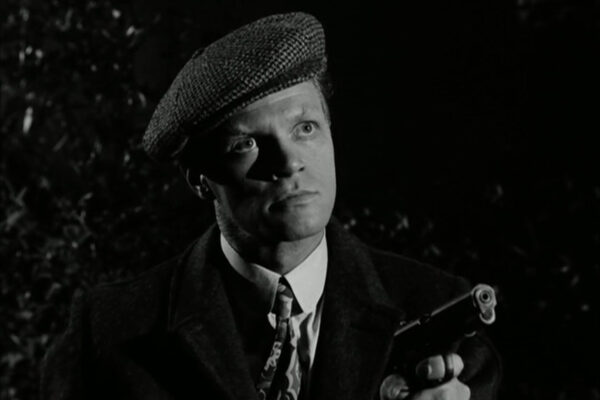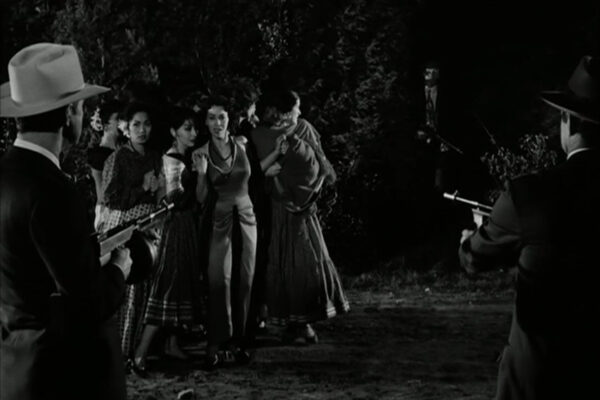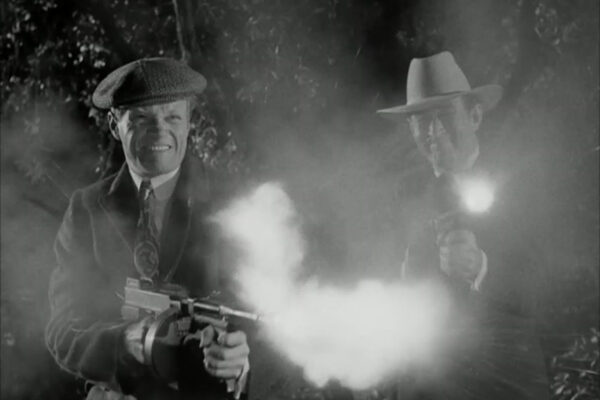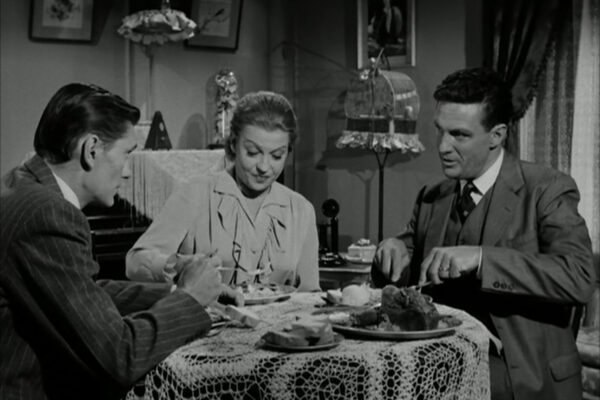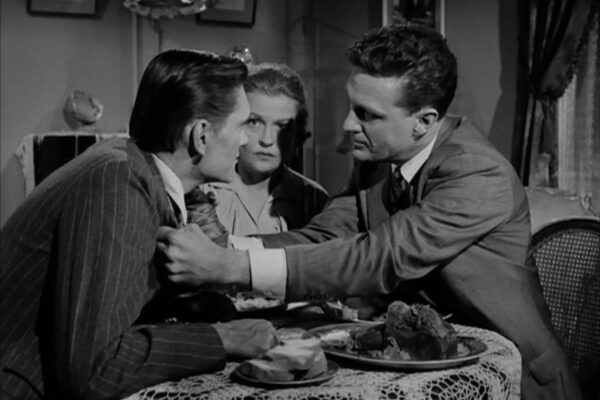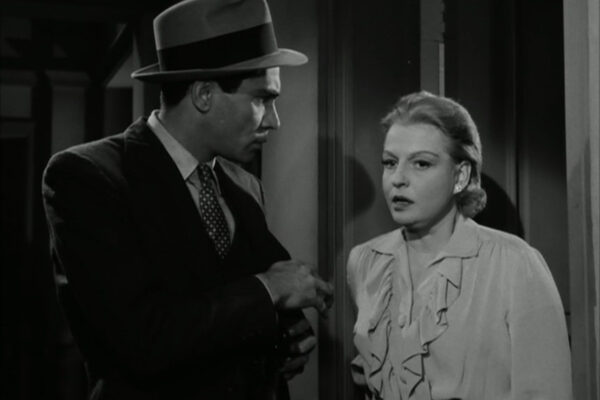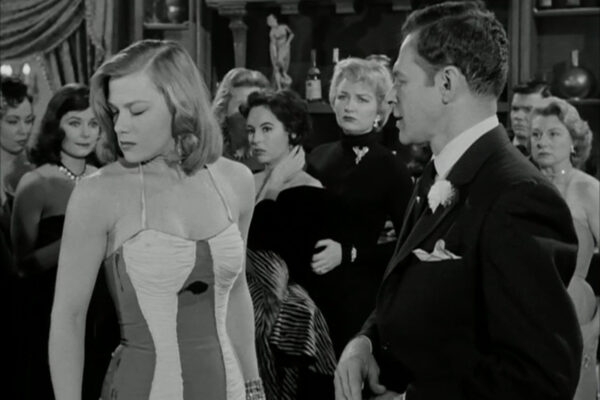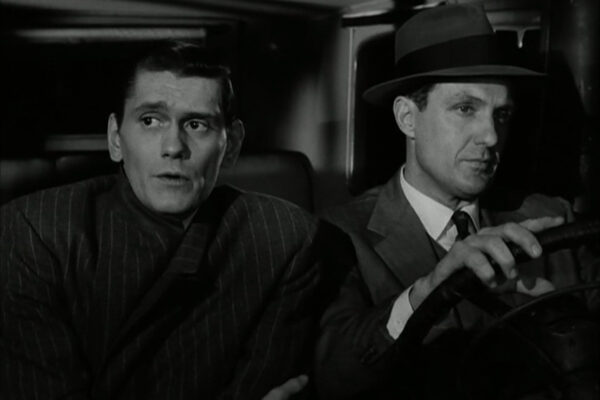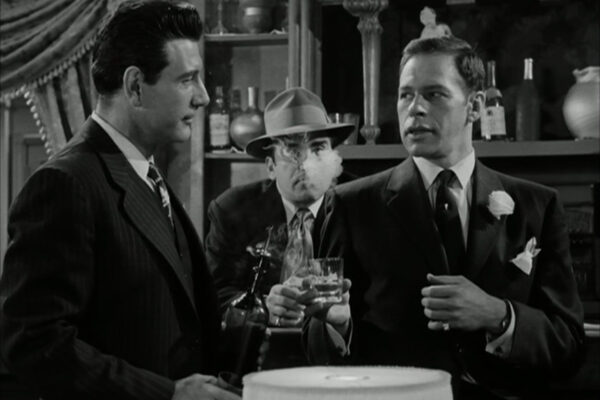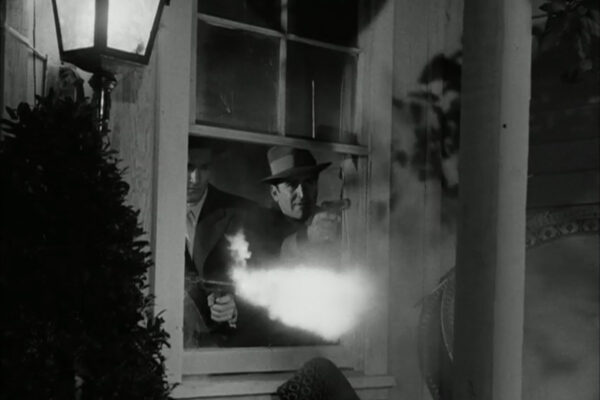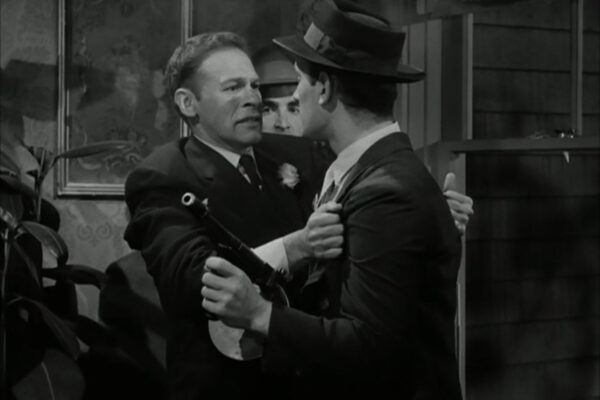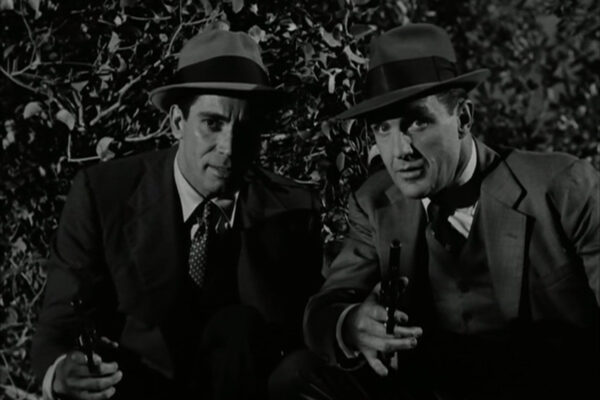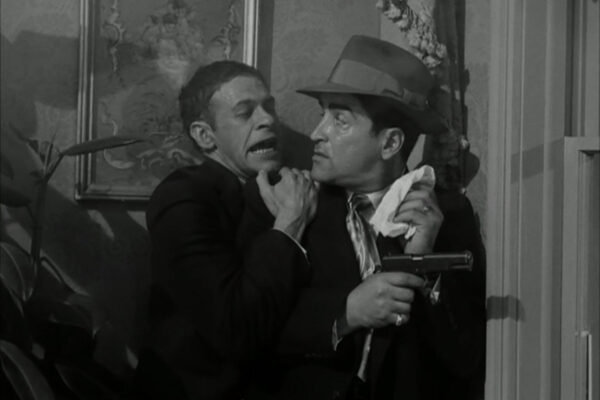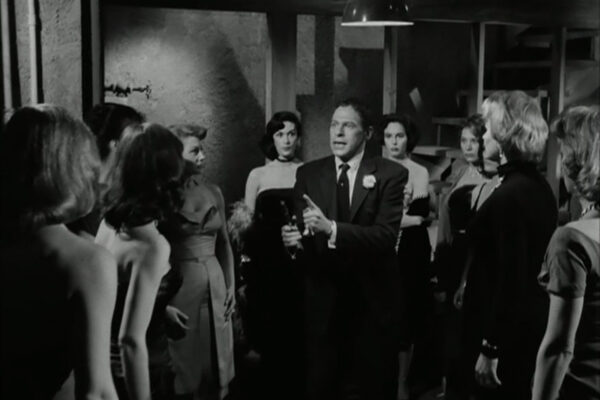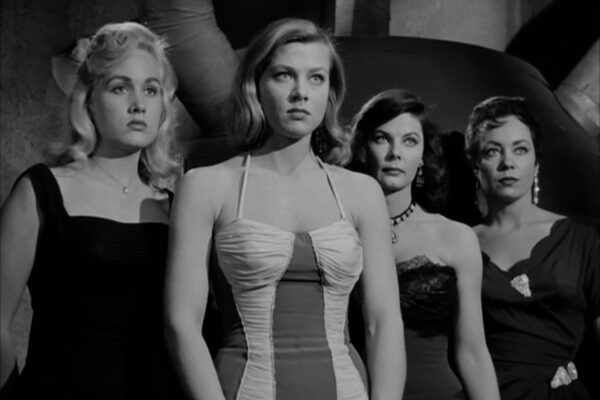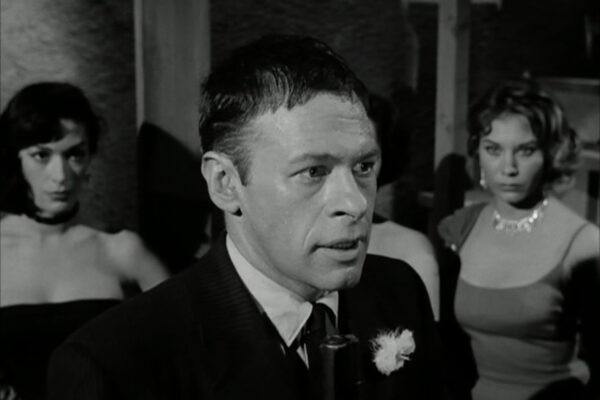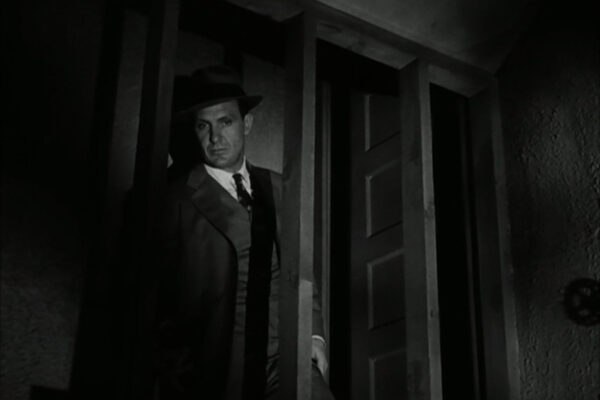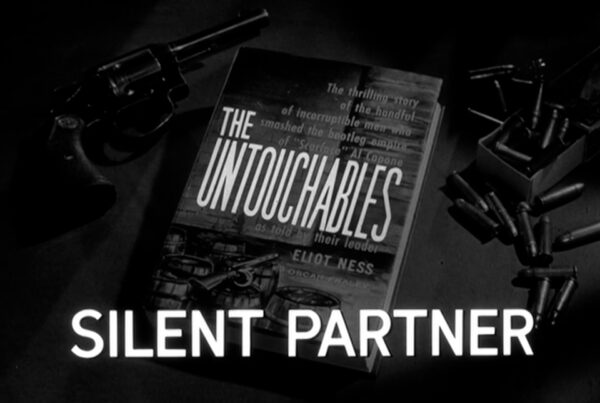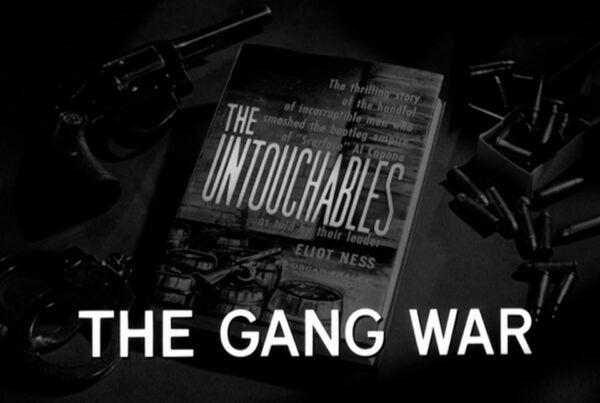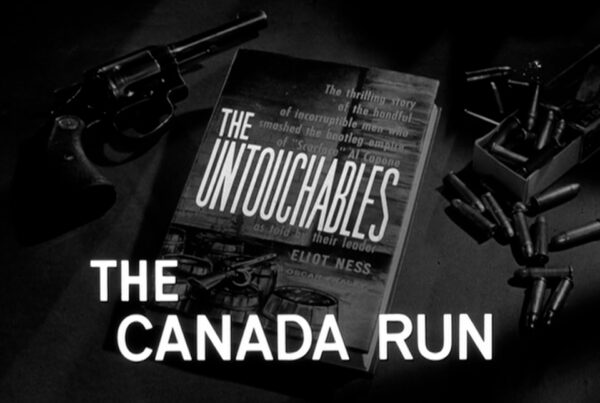THE WHITE SLAVERS
Airdate: March 10th, 1960
Teleplay by Leonard Kantor
Directed by Walter Grauman
Produced by Josef Shaftel
Director of Photography Charles Straumer
Special Guest Star Betty Field Featuring Dick York, Mike Kellin, Nita Talbot, Jeremy Slate, Paul Langton, James Anderson, Natividad Vacio, Sarita Vara, Robert Gibbons, Mona Knox, and Theona Bryan.
“Prohibition was dead, but mobster Mr. Big, Al Capone, operating from a federal prison where he was doing time for income tax evasion, was still active. The top money-maker in his new empire was a Chicago white slave ring run by Capone’s partner, Mig Torrance. March 31, 1934; Eliot Ness led a raiding party on one of Capone’s houses of prostitution. It was the seventh such raid since federal man Ness had been assigned to break up the ring. Inside the house, the inmates having been tipped off by certain corrupt police officials in the city government were escaping through a trap door in the cellar leading to a tunnel on the waterfront. In one of the rooms a girl lay dead. Mourning at her side was twenty-one year old Ernie Torrance, kid brother of Mig Torrance.”
Running into trouble with the syndicate, prostitution chief Mig Torrance is persuaded by Capone’s emissaries to take on a partner1 the well-known but retired madame, Mrs. Buchanan, known simply as Mrs. B., but she flatly refuses. Torrance responds by sending in his kid brother, Ernie (Dick York), to “waltz her around a little.” Instead, Ernie cuts a deal: He won’t harm her if she claims the body of a young hooker, who died from an overdose of heroin. Mrs. B agrees and soon shows up in Ness’s office to arrange the girl’s funeral. On the day of the funeral. Ness proves to be the only man among the mourners. Hoping to interest in Mrs. B’s many pet birds, Ness suggests the girls flock together for protection.
Receiving a tip that Ernie headed for Mexico to smuggle in new talent, the Untouchables head south to catch them crossing the border. Warned that Ness is waiting for them, Mig sends word to get rid of the evidence. Unable to participate in wholesale slaughter, Ernie blacks out as Mig’s goons murder a dozen innocent Mexican women with machine guns. The Chicago press plays up the story and Ness renews his attacks on Torrance’s operation.
Hoping to buy his way out, Ernie strikes a deal with Mig that involves Ness’s death in an ambush at the mob’s well-concealed fortress. But the plan fails when Mrs. B. survives an attempt on her life, and she quickly reveals the location of Mig’s headquarters.
After a blazing gun battle, Mig flees to the cellar where his girls had been locked up for the duration. Pleading with them to swear that he had been with them all the time, the girls turn on their master. As Ness and his men enter the building, a single shot reverberates from the cellar.
“And so the reign of the white slaver, Mig Torrance, was over. The girls he had lived by he had died by. The hawk was killed by the sparrows, and the next day, the sparrows sang to Ness, a song that helped bring stiff prison sentences to Wheaton, Gold, and Flannigan, and the other key figures in Capone’s prostitution setup. As for Mrs. B., she lived happily retired, ever after.”
REVIEW
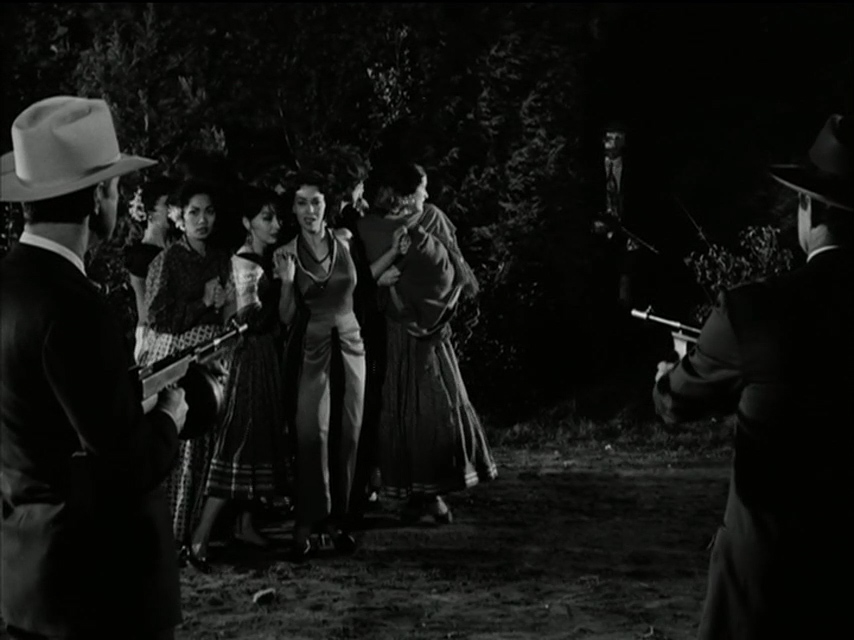 Regarded as perhaps the most brutal episode of the series, director Walt Grauman recalls the mass murder sequence vividly: “We couldn’t show, and we didn’t really want to show a dozen women shot down by machine guns. So someone suggested that Dick York go behind a tree and throw up. But we didn’t have actors throwing up on television then, either, so he wound up just sort of blacking out and leaning against this tree.”
Regarded as perhaps the most brutal episode of the series, director Walt Grauman recalls the mass murder sequence vividly: “We couldn’t show, and we didn’t really want to show a dozen women shot down by machine guns. So someone suggested that Dick York go behind a tree and throw up. But we didn’t have actors throwing up on television then, either, so he wound up just sort of blacking out and leaning against this tree.”
Abel Fernandez recalls bags of unhappy mail from Mexicans incensed over The White Slavers: “We had the Italians mad at us, then all of a sudden we had Mexicans mad at us, then the Germans, the Irish…you name them and they were mad at us. But they kept watching.”
And keep watching they did.
Now starting to understand the level of scrutiny being applied to Desilu’s up-and-coming darling, Quinn Martin had very specific notes in his memo to co-producer Josef Shaftel, asking for Mig’s last name to be changed from “Florio” to a non-Italian name and to do away with stating he was a cousin of Capone.
Quinn also voiced concerns about losing sponsorships and admitted the Mexican slaughter of the prostitutes is “the roughest I have ever seen…I don’t know if you can get away with it on camera, but let’s leave it in. I have a feeling you may have to kill the girls off camera.”
Martin later added, “I would like to state again that I think this an excellent script.”
Director-producer Walter Grauman recalls filming the controversial scene.
QUOTES
NESS: I need your help to wake up the public. Drugs are only one of the tools the punks used to trap young girls. They work through the mail too. Plant advertisements in magazines. Answer an ad and learn how to become a glamorous Hollywood star. Enter a beauty contest and learn how to become a glamorous model. Phony lures to meet young kids and trap them into the glamorous profession of prostitution. These punks know how and there as organized as any big business.
REPORTER: Who gets the credit for that? Mig Torrance or Al Capone?
NESS: The credit belongs to the public who sit on their big fat apathies and give the Torrances and the Capones a chance to organize.
NESS (to reporters): If you guys would needle the public the way you’re needling me, the picture might be different.
MRS B.: Don’t lose the crease in your pants, cutie.
NESS: For the only man at the gathering I don’t seem to be doing so well.
OBSERVATIONS
• After getting his feet wet earlier in the season with The Underground Railway, Screenwriter Leonard Kantor is back to begin carving out memorable female characters like Mrs. B. He’ll return again for the powerhouse Second Season premiere, The Rusty Heller Story, starring Elizabeth Montgomery. This episode, of course, stars future Bewitched actor Dick York who will later co-star in with Montgomery on Bewitched.
• The idea that Ness contracts a cold from the newspaper reporter is a small but sly attempt to add a little variety to the hour.
• Ness attending the wake is a nice touch that reveals a slight boyish charm to his characterization. So much so that we’ll forgive the obvious blooper where Stack raises both the receiver and the speaker of the candlestick telephone to his ears – a mistake he quickly corrects in character.
• The stock music used during the Mexican massacre is used again in the finale, providing a nice link between the two moments.
• Referencing the scene where Capone representatives are introduced, Quinn Martin’s script notes also made an amusing self-reference to the established style of the show: “Let’s introduce these cats ala ‘Untouchables‘ style with closeups and narration with a one-line background description.”


